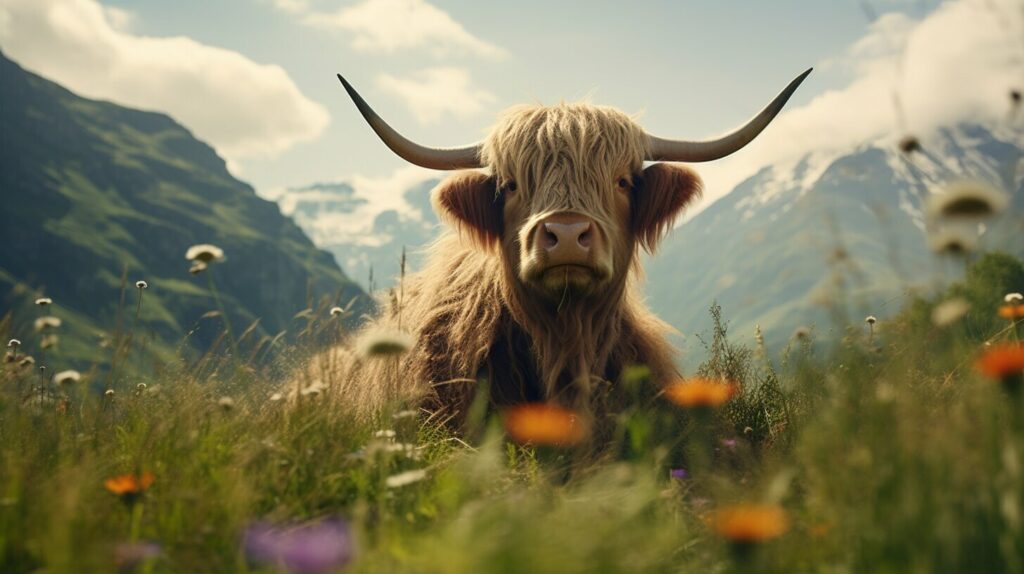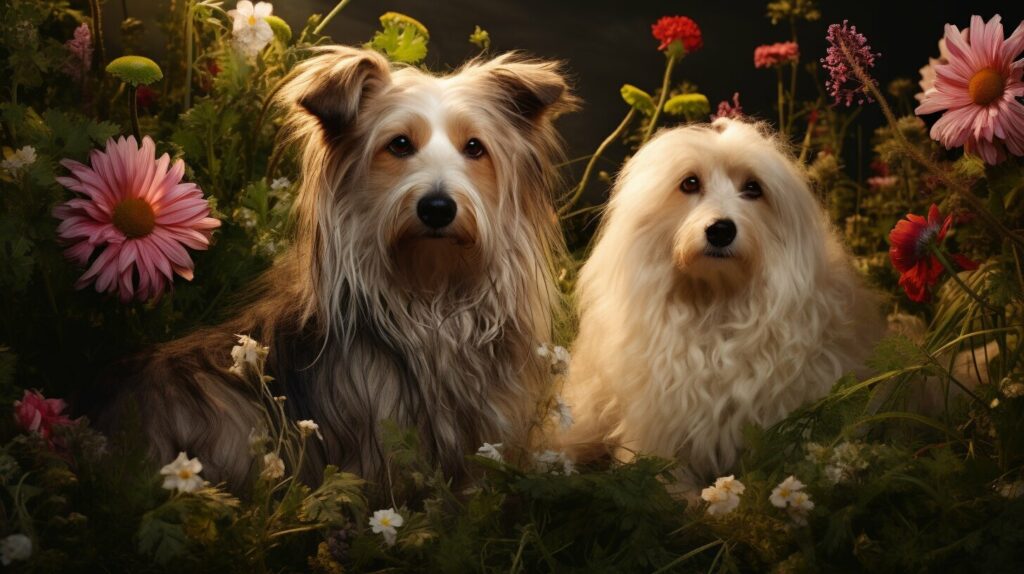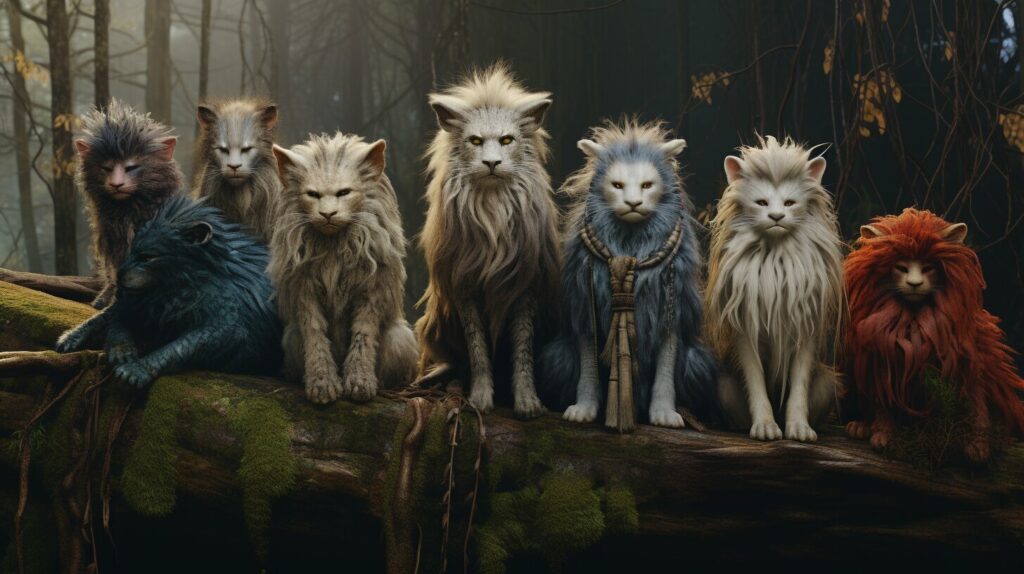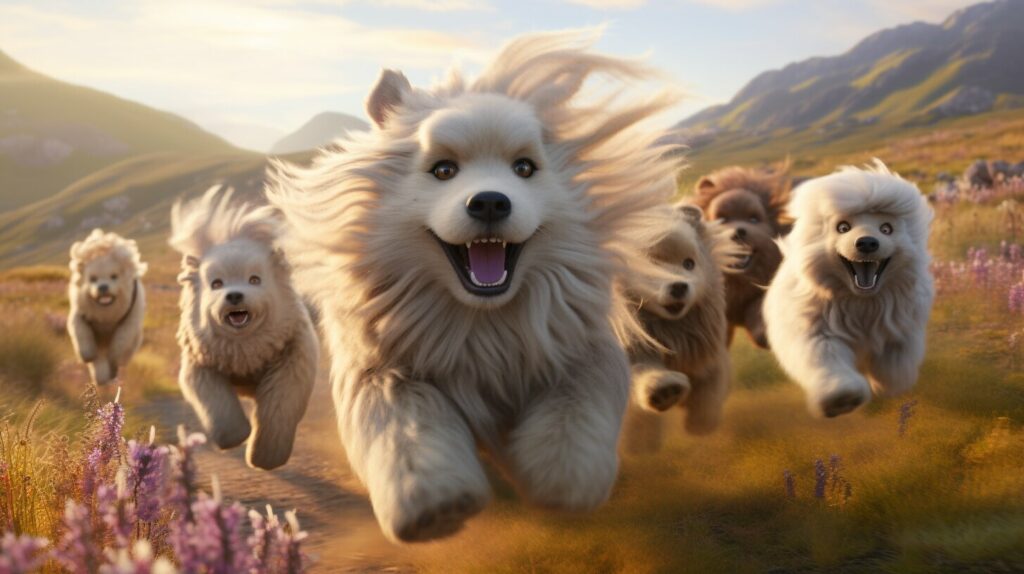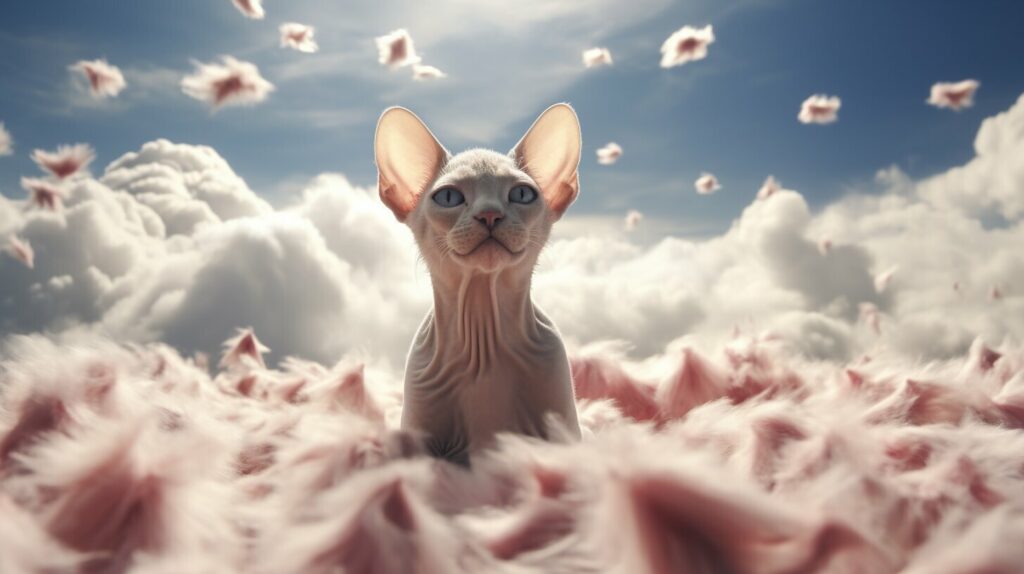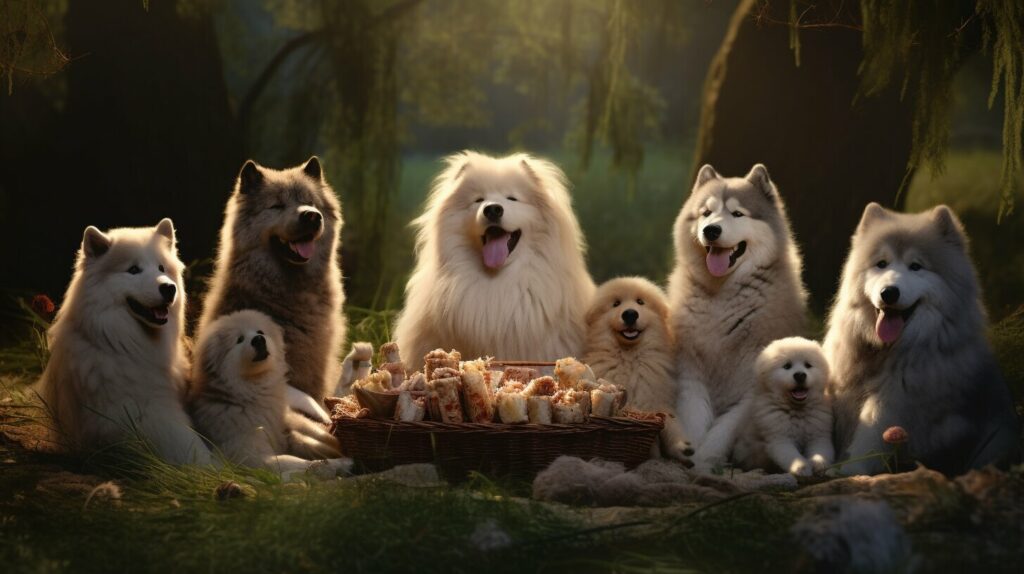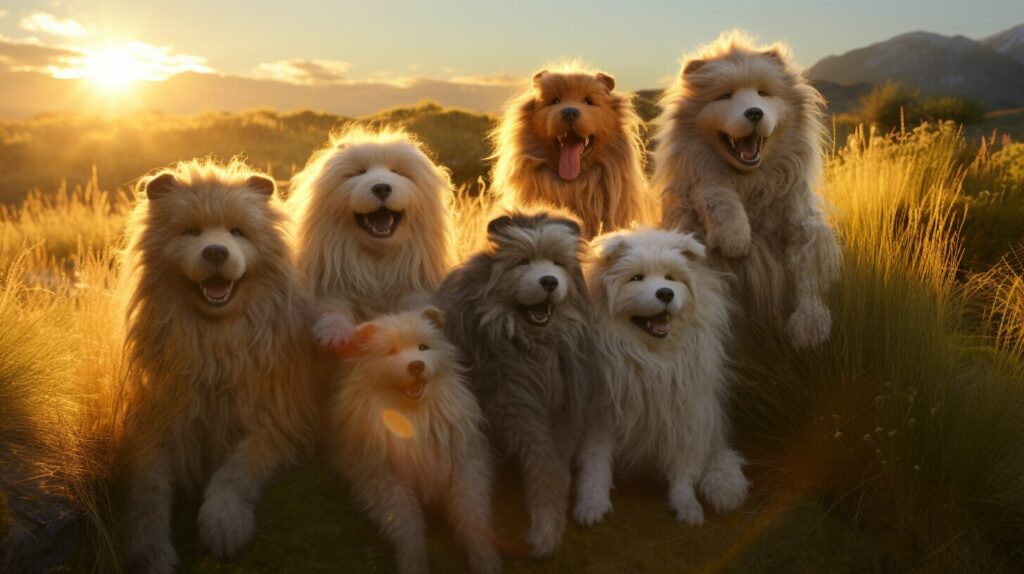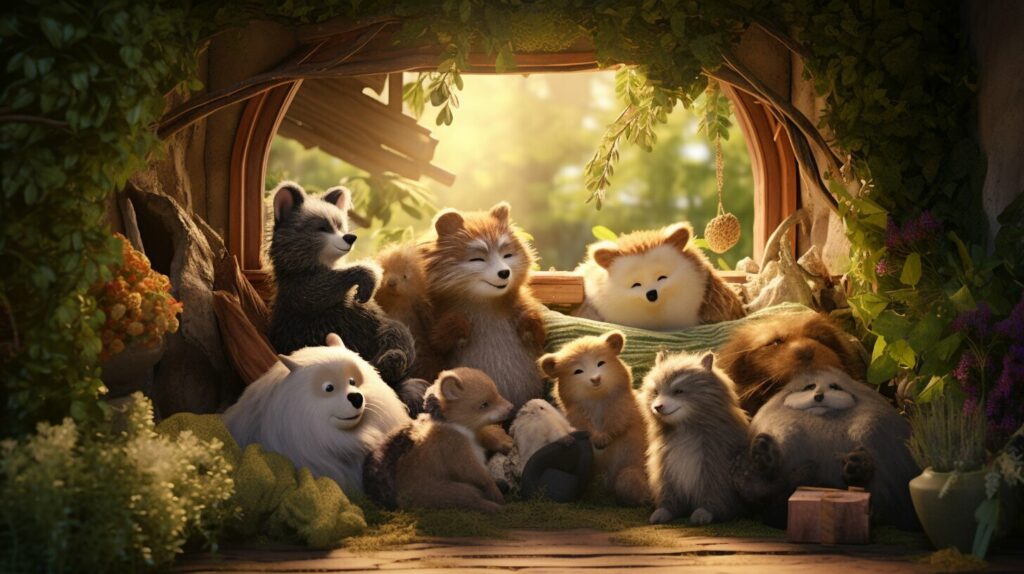
Unleashing the Fuzz: A Witty Take on Hairy Animals
Welcome to the captivating realm of hairy animals, where fur reigns supreme and laughter knows no bounds. In this amusing journey, we’ll delve into the fascinating and funny facts about our furry friends. From hairy mammals to furry creatures, we’ll giggle and marvel at the unsung heroes of the wild.
- Hairy animals, including cats, have fur that serves various purposes such as insulation and protection.
- Shedding is a natural process for cats, with an average of 50 to 150 hairs shed per day.
- Hairballs, or trichobezoars, are a common occurrence in cats but can be a concern if excessive.
- Hairless cat breeds, like the Sphynx, still have a layer of downy fuzz and can cause allergies.
- The color and pattern of cat fur are determined by genetics and can be influenced by the environment.
The Marvels of Hairy Wildlife Species
Step into the untamed wilderness as we discover the enchanting world of hairy wildlife species. From bushy animals to shaggy wildlife, these creatures captivate us with their stunning fur and fascinating adaptations. Whether it’s the majestic mane of a lion or the fluffy coat of a polar bear, each species boasts a unique charm that reflects the diversity of our natural world.
One notable example is the Arctic fox, whose thick and shaggy fur serves as insulation against sub-zero temperatures. This adaptation allows them to survive in harsh Arctic environments and hunt successfully in snowy landscapes. Their bushy tails, often referred to as “brushes,” provide balance and warmth, making them exceptional hunters in their icy domain.
Another furry wonder is the orangutan, known for their long, flowing reddish-brown hair. This magnificent primate uses its hair not only for protection against the elements but also as a tool for building nests and attracting mates. As they swing gracefully through the treetops, their shaggy hair adds to their charismatic allure, making them a sight to behold in the lush jungles.
“Nature’s creativity truly shines through in the diverse coats and patterns of hairy wildlife species. Each strand of fur tells a story of adaptation, survival, and beauty.”
While some features of hairy wildlife may seem purely aesthetic, they often serve essential purposes. From camouflage to communication, fur plays a vital role in the lives of these creatures. As we continue our journey through the realm of hairy animals, let’s embrace the marvels they offer and appreciate the unique tapestry of their fur.
| Hairy Wildlife Species | Features |
|---|---|
| Lion | Majestic mane, used for intimidation and attracting mates. |
| Polar Bear | Thick, insulated fur, perfect for Arctic survival. |
| Arctic Fox | Shaggy coat and bushy tail, providing warmth and agility in snowy environments. |
| Orangutan | Long, flowing hair used for nest-building, insulation, and attracting mates. |
Exploring the Quirky World of Hairy Pets
Prepare for a dose of cuteness overload as we explore the amusing escapades of our beloved hairy pets. From mischievous cats to playful pups, these furry companions never fail to bring a smile to our faces. Whether it’s their silly antics or their unconditional love, there’s no denying the joy they bring into our lives.
One of the quirkiest aspects of hairy pets is their grooming routines. Cats, in particular, are notorious for their fastidious nature when it comes to cleanliness. They spend hours meticulously licking their fur, ensuring every strand is in place. It’s both fascinating and hilarious to watch as they contort their bodies into impossible positions just to reach those hard-to-reach spots.
But grooming isn’t just about looking good for our furry friends. It also serves important purposes, such as removing dirt and parasites from their fur, as well as distributing natural oils that keep their skin healthy. It’s a natural instinct that has been perfected over thousands of years of evolution.
“A cat’s grooming habits are both a marvel and a source of entertainment. It’s like watching a circus act, with their acrobatic moves and meticulous attention to detail.” – Cat Lover
While hairy pets bring us plenty of laughter and joy, it’s important to remember that their fur requires regular maintenance. Brushing their coats not only helps to prevent tangles and matting but also helps to reduce the amount of hair they shed around the house. Plus, it’s a great bonding activity that allows us to show our furry friends some extra love and affection.
So, as we continue to revel in the hilarious escapades of our hairy pets, let’s take a moment to appreciate the joy they bring into our lives. They may leave a trail of fur wherever they go, but their unconditional love and quirky personalities make it all worthwhile.
Table: Fun Facts About Hairy Pets
| Hairy Pet | Fun Fact |
|---|---|
| Cats | Hairballs are a common occurrence due to their grooming habits. |
| Dogs | Some breeds have hair instead of fur, which requires regular haircuts. |
| Rabbits | Their thick fur serves as insulation and protection from the elements. |
Summary
Our hairy pets bring so much laughter and happiness into our lives. From their amusing grooming routines to their unconditional love, we can’t help but adore them. So, let’s cherish the moments we share with our furry friends and continue to celebrate the delightful quirks that make them truly special.
Unraveling the Mysteries of Hairy Mammals
Embark on a captivating journey into the world of hairy mammals, where mysteries await and laughter abounds. From the adorable fluff of a kitten’s fur to the majestic mane of a lion, the diversity and wonder of hairy mammals never cease to amaze.
Did you know that the intricate patterns and colors of their fur are determined by genetics? Just like humans, these furry creatures inherit their distinctive coats from their parents. Whether it’s the mesmerizing stripes of a zebra or the striking spots of a cheetah, the genetic lottery creates stunning works of art in the animal kingdom.
But fur isn’t just for looks; it serves a multitude of purposes. From insulation to protection against the elements, hairy mammals have evolved to thrive in their environments. Some even use their fur as a form of communication, puffing it up to appear larger and more threatening to potential predators.
Shedding is another fascinating aspect of hairy mammals. It’s a natural process that helps them get rid of old or damaged hair, making room for new growth. On average, cats shed between 50 to 150 hairs per day! So, if you find a few hairs on your clothes, just remember that it’s a sign of a healthy, shedding feline friend.
Table: The Colorful World of Hairy Mammals
| Mammal | Fur Color | Fur Pattern |
|---|---|---|
| Lion | Sandy, golden, or brown | Plain |
| Tiger | Orange with black stripes | Striped |
| Giraffe | Patchy brown and tan | Spotted |
| Zebra | Black and white | Striped |
As the saying goes, “Beauty is in the eye of the beholder,” and when it comes to hairy mammals, their fur is undeniably captivating. So, next time you encounter a furry friend, take a moment to appreciate the marvels of their coats and the incredible mysteries that lie within.
Shedding Light on the Hairy Phenomenon
Get ready to unravel the mysteries behind shedding as we delve into the hairy world of wildlife species and mammals alike. Shedding is a natural process for these hairy creatures, serving various purposes such as maintaining temperature regulation and renewing their fur. On average, cats shed around 50 to 150 hairs per day, allowing for healthy growth and replacement.
But what happens when shedding goes haywire? Hairballs, also known as trichobezoars, are a common occurrence in cats. These wads of hair can form in the stomach when cats groom themselves and ingest their loose fur. While a hairball or two every now and then may not raise concerns, excessive hairballs can lead to digestive issues and discomfort.
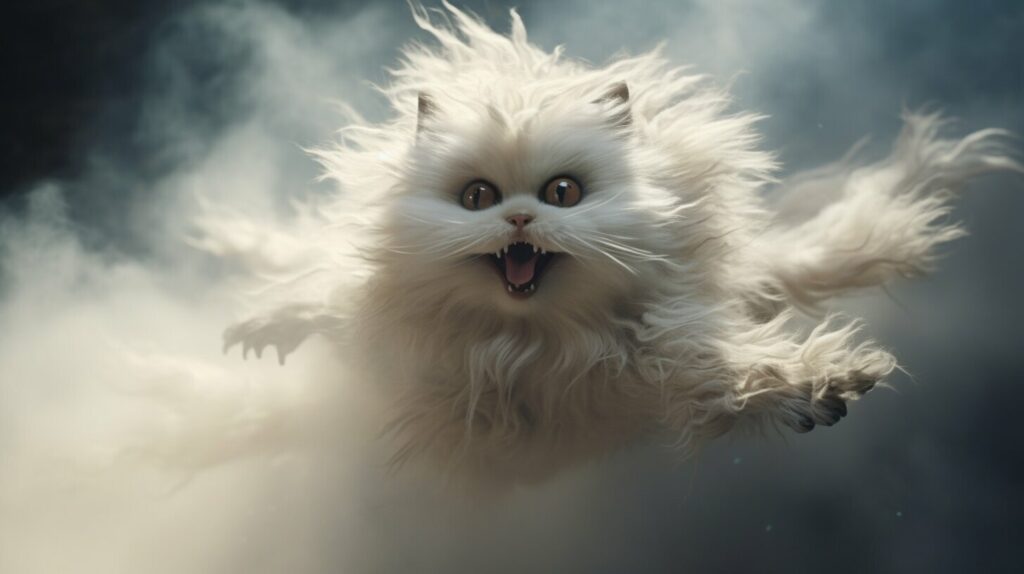
| Key Facts about Shedding in Cats: |
|---|
| Shedding is a natural process for cats. |
| Cats shed an average of 50 to 150 hairs per day. |
| Excessive hairballs can cause digestive issues. |
| Genetics and environment influence the color and pattern of cat fur. |
Even hairless cat breeds, such as the Sphynx, have a layer of downy fuzz that can trigger allergies in some individuals. Despite having less fur, these unique feline friends still require regular care to keep their skin healthy and clean.
So, the next time you find a clump of fur on your carpet or witness your furry friend battling a hairball, remember that shedding is a natural and necessary part of their lives. Embrace the wonders of shedding and appreciate the beauty and diversity of hairy animals, both wild and domestic.
Hilarity Ensues: Hairballs and Furry Critters
Prepare for a laughter-filled adventure as we explore the comical world of hairballs and furry critters. These hilarious occurrences are an inevitable part of life for many of our beloved hairy pets. From tangled fur to amusing grooming rituals, our furry friends never fail to provide us with moments of frustration and amusement.
One of the most entertaining aspects of hairy animals is the phenomenon of hairballs. These furry critters can’t seem to resist grooming themselves, and as a result, they often end up swallowing a substantial amount of hair. This can lead to the formation of hairballs in their stomachs, which they later cough up in the most amusing and unexpected moments.
“Seeing my cat chase her own hairball around the room like it was a mouse was one of the funniest things I’ve ever witnessed,” says Sarah, a cat owner from Chicago. “It’s moments like these that remind me why I love having a furry companion in my life.”
While hairballs may be a source of laughter, they can also become a concern if they occur too frequently or cause discomfort to our furry friends. Regular grooming and a healthy diet can help minimize the occurrence of hairballs and keep our pets happy and carefree. If you’re ever worried about your hairy pet’s health, it’s always a good idea to consult with a veterinarian.
In conclusion, the comical world of hairballs and furry critters is a constant source of amusement and joy for pet owners. Whether it’s watching our cats chase their own hairballs or marveling at their amusing grooming rituals, these furry companions never fail to bring a smile to our faces. So, embrace the humorous side of pet ownership and cherish the hilarious moments shared with these furry critters.
Hairy Pets and Allergies: The Sphynx Conundrum
Discover the paradoxical world of hairless pets as we navigate the intriguing relationship between these fluffy-free creatures and those prone to allergies. While hairless cat breeds, such as the Sphynx, may seem like the perfect solution for allergy sufferers, they still possess a layer of downy fuzz that can trigger allergic reactions.
The Sphynx cat, with its unique hairlessness, has captivated the hearts of many feline enthusiasts. Their smooth, warm skin and playful personalities make them irresistible to pet lovers. However, it’s important to note that their lack of fur doesn’t make them hypoallergenic. The allergen that triggers reactions in people with cat allergies is not the hair itself, but rather a protein called Fel d 1, which is found in a cat’s saliva and skin secretions.
Despite the absence of visible fur, hairless cat breeds still produce this allergenic protein, though to a lesser extent than their furry counterparts. Consequently, individuals with cat allergies may still experience symptoms when exposed to hairless cats. Factors such as grooming, shedding of dead skin cells, and the cat’s interaction with its environment can contribute to the spread of allergens, even with hairless pets.
Managing Allergies with Hairless Pets
If you’re considering a hairless pet but suffer from cat allergies, there are several measures you can take to minimize allergic reactions. Regular bathing of the cat can help reduce the presence of allergens on its skin, while keeping the living environment clean and free from dust and dander can create a more allergy-friendly space. Additionally, replacing carpets with hardwood or tile flooring can help prevent allergens from accumulating.
| Managing Allergies with Hairless Pets | Tips for Reducing Allergens |
|---|---|
| Regular bathing | Use hypoallergenic shampoos and wipes |
| Clean living environment | Vacuum frequently and dust regularly |
| Replace carpets with hardwood or tile flooring | Minimize dust and dander accumulation |
| Invest in an air purifier | Helps filter out allergens from the air |
Remember, allergies vary from person to person, and it’s important to consult with a healthcare professional or allergist for personalized advice and guidance. With proper care and management, individuals with cat allergies can still enjoy the companionship of a hairless pet, experiencing the love and joy they bring into our lives.
The Genetics of Fur: Exploring Color and Patterns
Let’s dive into the captivating realm of genetics and explore the mesmerizing palette of colors and patterns that adorn the fur of various hairy animal species. From striped tigers to spotted cheetahs, the intricate design of their fur is a testament to the wonders of nature.
In the world of hairy animals, genetics play a crucial role in determining the color and pattern of their fur. It’s fascinating to think that every hair on their bodies is encoded with a genetic blueprint that dictates its hue and design. The colors can range from vibrant oranges and blacks to subtle shades of gray and white, creating a stunning array of visual displays. Some animals even sport intricate patterns like spots, stripes, and rosettes, adding to their allure.
To better understand the genetics behind fur color and patterns, scientists have studied various hairy animal species. They have identified specific genes responsible for pigmentation and pattern formation, unraveling the secrets behind nature’s artistic brushstrokes. These findings have not only deepened our understanding of genetics but also shed light on the incredible diversity within hairy animals.
| Fur Color | Pattern | Hairy Animals Species | Image |
|---|---|---|---|
| Brown | Stripes | Tiger | 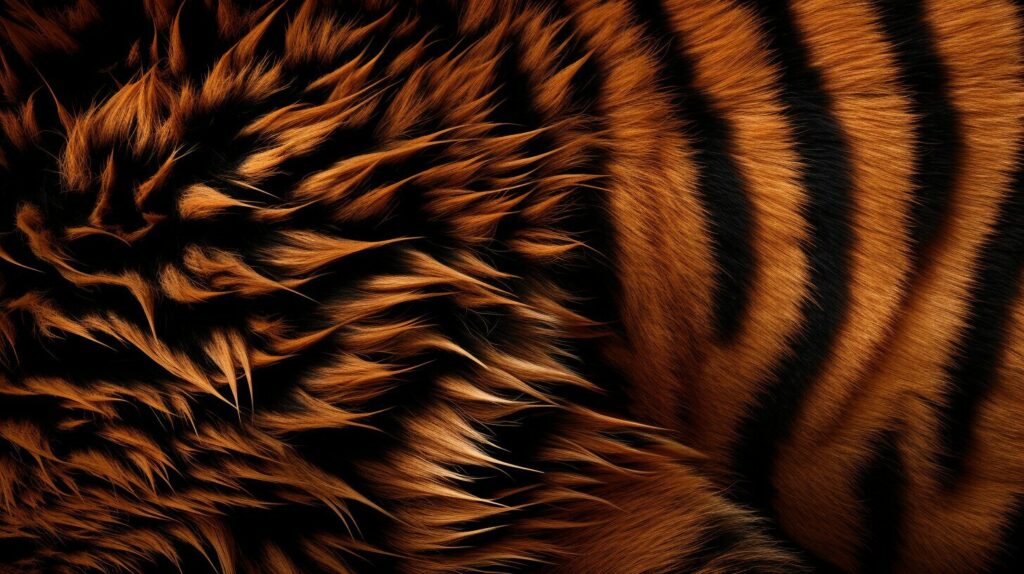 |
| Black and White | Spots | Cheetah | 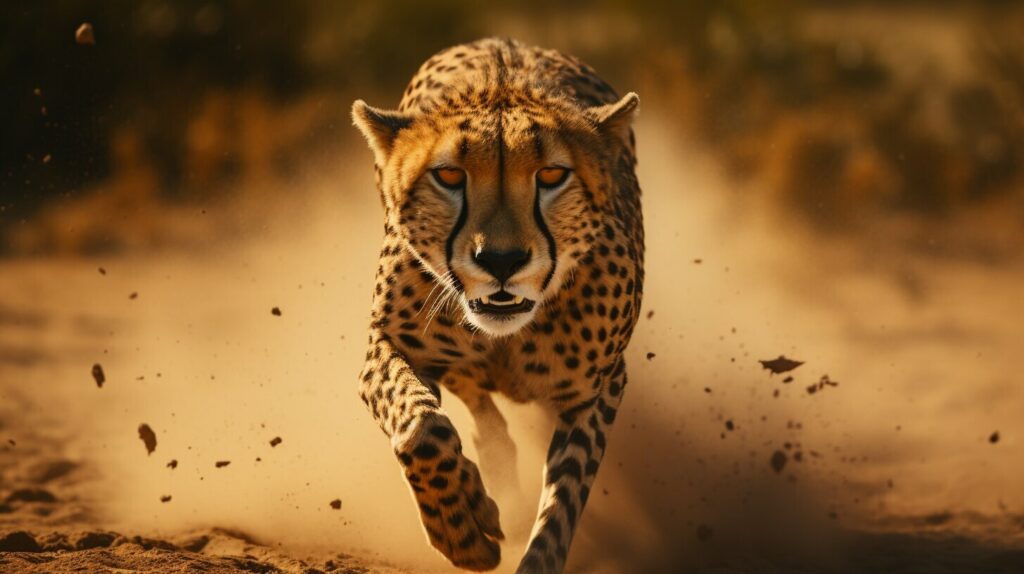 |
| Gray | Stripes | Zebra | 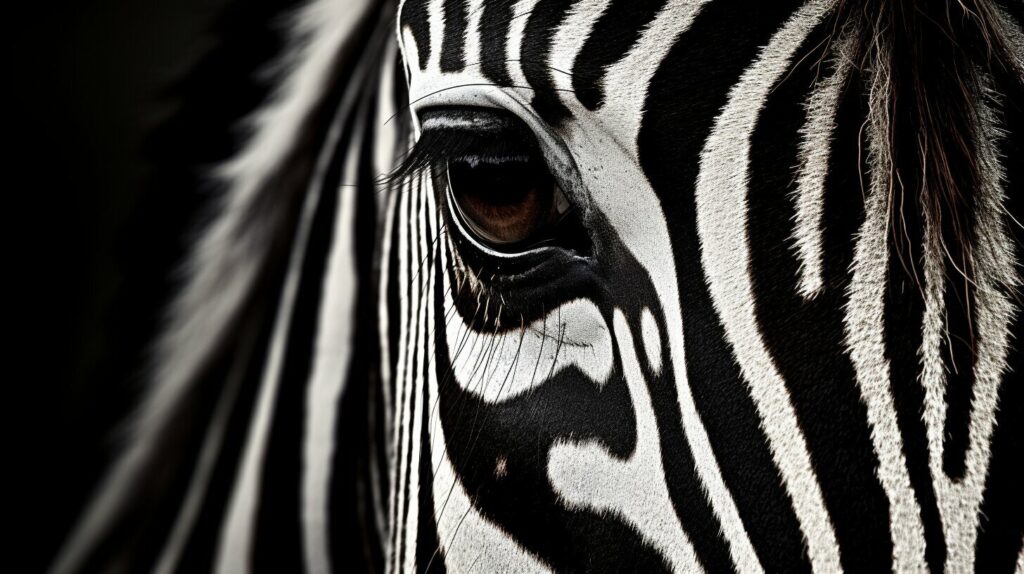 |
As we marvel at the genetic marvels that create the stunning fur patterns of hairy animals, it’s important to remember that these features serve more than just aesthetic purposes. They can aid in camouflage, helping animals blend seamlessly into their surroundings, or serve as a warning sign to potential predators. The intricate genetic makeup of their fur is a testament to the power of adaptation and survival.
So, the next time you gaze upon the furry coat of a majestic tiger or the sleek spots of a graceful cheetah, take a moment to appreciate the complexity and beauty that genetics have woven into their fur. It’s a reminder that even in the realm of hairy animals, nature is an artist, creating masterpieces that continue to captivate our hearts and minds.
Hairy Frustrations and Amusing Moments
Get ready to chuckle and nod in recognition as we recount the all-too-relatable frustrations and hilarious moments that come with sharing our lives with hairy pets and mammals. From tangled fur to comical grooming rituals, these furry creatures never fail to provide us with moments of both exasperation and amusement.
One of the most common hairy frustrations is the dreaded hairball. Every cat owner knows the sight and sound of their feline friend expelling a hairball with a mix of horror and humor. These globs of fur, known as trichobezoars, are a natural occurrence as cats groom themselves, but they can be a concern if they become excessive. However, it’s hard not to crack a smile as your cat goes through a series of contortions to rid themselves of these pesky hairballs.
“My cat, Mr. Whiskers, once coughed up a hairball the size of a small melon! It was equal parts horrifying and impressive. Needless to say, I invested in a good brush after that!” – Cat Lover
But it’s not just hairballs that provide endless amusement. The grooming habits of our hairy pets can also leave us in stitches. Watching a cat twist and contort to lick every inch of their fur is a sight that never fails to bring a smile to my face. It’s as if they’re performing an intricate dance, all in the name of cleanliness. And let’s not forget the classic “bedhead” look that cats often sport after a particularly vigorous grooming session. It’s hard not to laugh when you see your cat sporting a fur style that would put any ’80s rockstar to shame.
So next time you find yourself untangling your pet’s fur or witnessing their hilarious grooming rituals, take a moment to appreciate the laughter they bring to your life. These furry creatures may frustrate us at times, but their amusing antics remind us why we love them so much.
Delve into the heartwarming world of human-animal connections as we celebrate the indescribable joy that comes from sharing our lives with furry creatures, be they pets or wild mammals. The bond between humans and these hairy creatures is a source of immense happiness, creating lifelong memories and cherished moments. Whether it’s the wag of a tail, the purr of a cat, or the gentle nuzzle of a hairy mammal, these interactions remind us of the magic and love that exist between species.
One of the most rewarding aspects of owning a pet is the unconditional love they provide. Hairy pets, like dogs and cats, offer companionship and loyalty that can never be replicated. They become our confidants, our playmates, and our support systems, bringing joy and laughter into our lives. And let’s not forget the amusing antics that hairy creatures provide – from silly moments to mischievous escapades, they constantly keep us entertained.
As Maya Angelou once said, “Animals are such agreeable friends – they ask no questions; they pass no criticisms.” That sentiment couldn’t be truer when it comes to our furry companions. Their presence alone brings us comfort and a sense of belonging. Whether we’re snuggling on the couch with a fluffy cat or embarking on outdoor adventures with a shaggy dog, the bond we share is truly special.
While the joy of hairy pets is undeniable, we must also appreciate the beauty and wonder of wild hairy mammals. From the majestic mane of a lion to the playful antics of a chimpanzee, these creatures captivate us with their grace and charm. They remind us of the intricate web of life and the importance of conservation efforts to protect their habitats. It is through our connection with these animals that we gain a deeper understanding of our place in the natural world.
As we navigate the ups and downs of life, the presence of hairy creatures brings solace and happiness. They teach us about responsibility, compassion, and the true meaning of unconditional love. So, let us cherish the bond we share with our hairy companions, celebrating the laughter and joy they bring to our lives every single day.
Recommended Reading:
- The Surprising Benefits of Pet Ownership – Discover the positive impact that owning a hairy pet can have on your mental and physical well-being.
- Exploring Wildlife Conservation Efforts – Dive into the world of hairy mammals and learn about the conservation initiatives aimed at protecting these incredible creatures.
| Hairy Creature | Description |
|---|---|
| Dog | Loyal, playful, and always up for an adventure. |
| Cat | Independent, mysterious, and the purveyor of endless cuddles. |
| Lion | King of the jungle, with a majestic mane that demands respect. |
| Chimpanzee | Curious, intelligent, and known for their mischievous nature. |
Wrapping Up: The Hilarity and Fascination of Hairy Animals
With a smile on our faces and a newfound appreciation for all things hairy, we bid farewell to the world of hairy animals, cherishing the laughter and fascination they have left in their wake. Throughout this wittily insightful journey, we’ve explored the amusing and remarkable aspects of hairy creatures, from their diverse species to their furry companionship.
From the marvels of hairy wildlife species to the quirky world of hairy pets, we’ve uncovered the joy and humor that these furry friends bring to our lives. We’ve delved into the mysteries of hairy mammals, unraveled the shedding phenomenon, and shared laughter-inducing anecdotes about hairballs and comical grooming rituals.
But it’s not all just fun and games. We’ve also discovered the fascinating genetics behind the color and pattern of fur in hairy animals, showcasing the intricate tapestry that Mother Nature weaves. And let’s not forget the heartwarming bond we share with these furry creatures, as they bring immense joy and love into our lives.
So, as we conclude this adventure into the realm of hairy animals, we invite you to take a moment to appreciate the beauty and diversity they embody. Whether it’s the bushy tails of squirrels, the shaggy manes of lions, or the fluffy coats of cats, these hairy beings remind us of the wonders of the natural world and the laughter they inspire.
FAQ
Q: What is the purpose of cat fur?
A: Cat fur serves as insulation, protection, and prevents UV damage.
Q: How much hair do cats shed daily?
A: On average, cats shed between 50 to 150 hairs per day.
Q: Are hairballs a common occurrence in cats?
A: Yes, hairballs, also known as trichobezoars, are common in cats.
Q: Can excessive hairballs be a concern?
A: Excessive hairballs can be a concern and should be monitored.
Q: Do hairless cat breeds still have fuzz?
A: Yes, hairless cat breeds like the Sphynx have a layer of downy fuzz.
Q: Can hairless cat breeds cause allergies?
A: Yes, hairless cat breeds can still cause allergies due to their fuzz.
Q: What determines the color and pattern of cat fur?
A: The color and pattern of cat fur are determined by genetics and can be influenced by the environment.
Q: Are hairy animals fascinating or frustrating?
A: Hairy animals can be both fascinating and frustrating, providing moments of laughter and joy as well as challenges.
- Exploring Why Peanut Allergies Are So Common Today - January 18, 2024
- Curious Facts: Why is it Called Bollywood? - January 17, 2024
- Unveiling the Secret: Why is it Called Moonshine? - January 13, 2024
